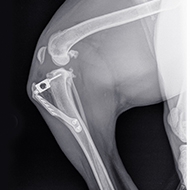Unlike other approaches that require the horse to wear a marker-based or sensor-based suit, this model uses a minimalist set of markers.
Film industry adopts tech developed for vet students
Motion capture technology intended to help veterinary students is being adopted by the film and gaming industries, to improve the animation of animals.
Research by Karl Abson from the University of Bradford is advancing the biomechanical accuracy of CGI animals, particularly horses.
The team developed a biomedical model that can capture equine movements. It can also be repurposed to to create models for other animal species.
Initially, the technology was intended to help vet students to understand normal and abnormal gait, but has since proved useful in filming and gaming.
In many cases, real animals cannot be used in filming for health and safety, practical or welfare reasons, so they must be recreated digitally.
As well as being costly and time-consuming, this can result in a lack of accuracy when it comes to animal movements, particularly if there is a lack of biomechanical understanding. As a consequence, the attention of the audience may be pulled towards the inaccuracies rather than the story.
Unlike other approaches that require the horse to wear a marker-based or sensor-based suit, the model developed by Bradford researchers uses a minimalist set of markers. This means less stress for the animal and less time invested in conditioning the animal to wear the suit.
As well as reducing the time and cost needed to build an animation, it yields more realistic results. The technology was recently showcased at the British Science Festival.
Image (c) University of Bradford







 Birmingham Dogs Home has issued an urgent winter appeal as it faces more challenges over the Christmas period.
Birmingham Dogs Home has issued an urgent winter appeal as it faces more challenges over the Christmas period.
